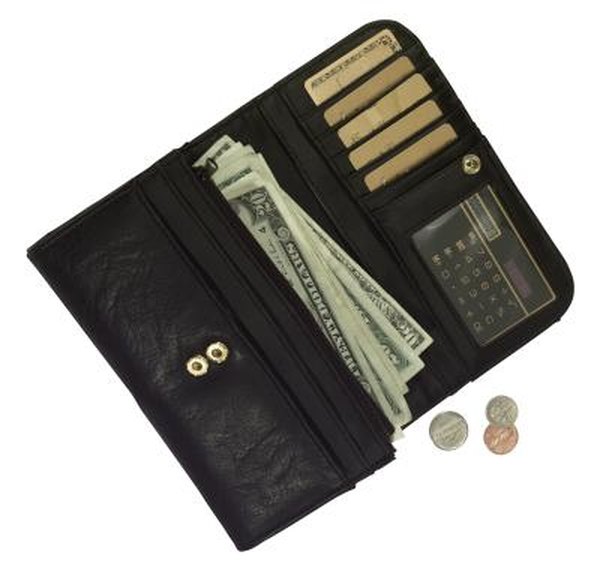M1 Economics Definition
That cash in your wallet is a little slice of M1.
Brand X Pictures/Brand X Pictures/Getty Images
It seems like such a simple question: How big is the U.S. money supply? But as with a lot of things in economics, the answer depends on the definitions you use. The government definition of the money supply actually has several levels, depending on how accessible money is. The level it refers to as "M1" consists of money that people and organizations could spend immediately. Its two main components are currency and deposits.
Circulating Currency
The first part of M1 is U.S. currency that's in circulation -- bills and coins available for spending, both in the United States and abroad. It doesn't include cash held in vaults by the U.S. Treasury Department, the Federal Reserve or financial institutions such as banks and credit unions. That cash isn't counted in M1 because it isn't ready to spend immediately. But coins in your dresser drawer or a wad of bills stuffed under your mattress do count in M1. Even currency that's been buried and long forgotten counts in M1, because as far as the government is concerned, it's still out there somewhere. Dig it up, it's still good. Though not currency, travelers checks are spendable like cash, so they, too, are included in M1.
Deposits
M1 includes "demand deposits" -- checking accounts, NOW accounts and any other deposits that you can draw upon any time you want. Traditionally, savings accounts, money market accounts and brokerage accounts weren't included in M1, since you couldn't spend the money in them immediately. However, more institutions are making such deposits accessible on demand, such as brokerage houses that allow you to write checks against your investments. So M1 now includes any deposits that are "checkable," meaning you can access the funds with a check, debit card or similar instrument.
Nuance
Cash in bank vaults doesn't get included in M1 because doing so would effectively count the same dollars twice -- once as cash and once as a deposit. Vault cash is there to provide liquidity for customers' deposits. The Federal Reserve requires banks to keep a certain portion of their deposits on hand as cash, so that when you go in to withdraw $100 from your account, there will actually be $100 there for you. When it was sitting in the bank, that $100 was counted as part of the bank's demand or checkable deposits. Once you take it out, it becomes currency in circulation.
Context
The amount of money in M1 is just a fraction of the money that's out there. The next layer of the government's money-supply definition, "M2," includes not just the M1 amounts but also all non-checkable savings accounts and money market accounts, plus time deposits (such as certificates of deposit) of less than $100,000. In mid-2013, for example, M1 amounted to about $2.5 trillion, including $1.1 trillion in currency. At the same time, M2 added up to about $10.5 trillion.
References
Writer Bio
Cam Merritt is a writer and editor specializing in business, personal finance and home design. He has contributed to USA Today, The Des Moines Register and Better Homes and Gardens"publications. Merritt has a journalism degree from Drake University and is pursuing an MBA from the University of Iowa.

